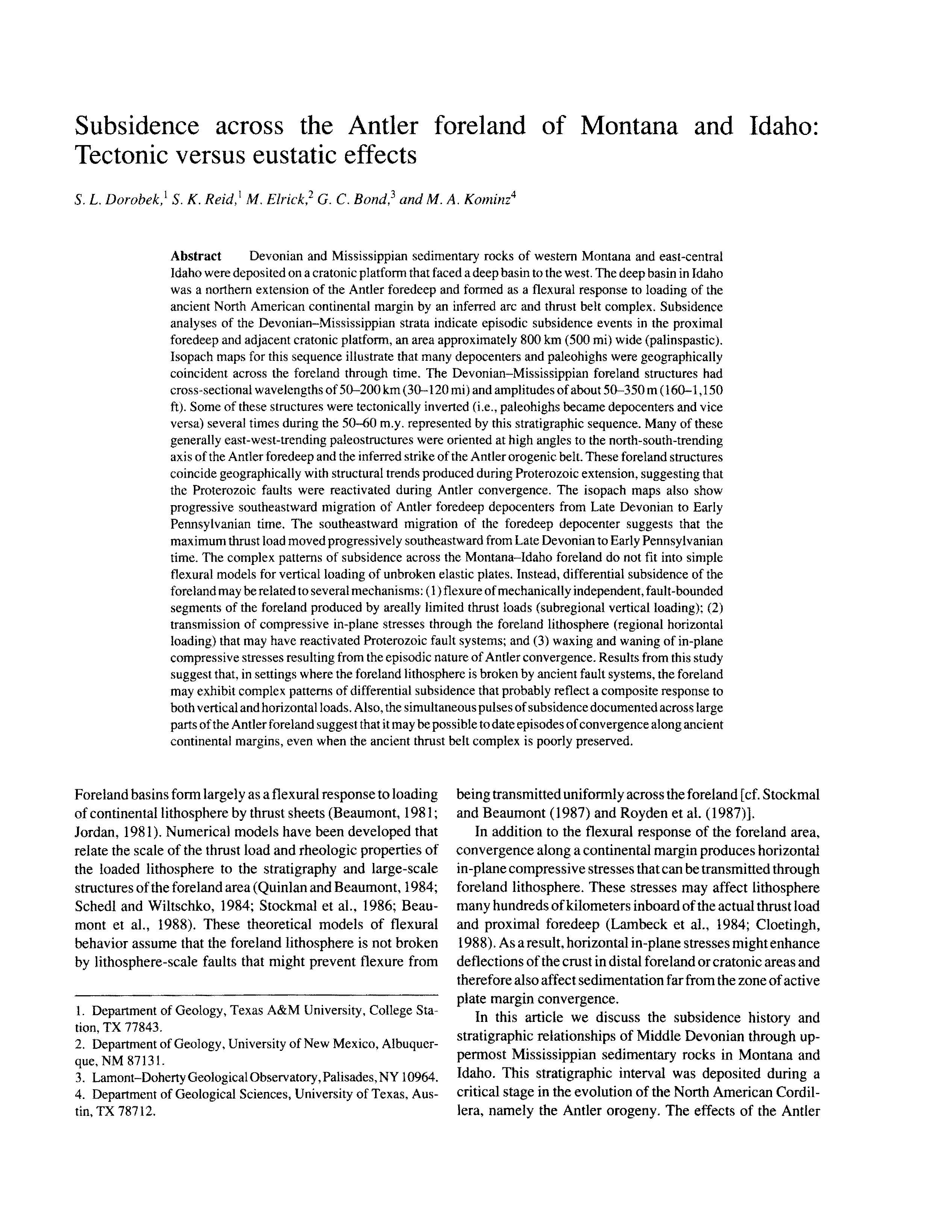Subsidence across the Antler foreland of Montana and Idaho: Tectonic versus eustatic effects
DOI:
https://doi.org/10.17161/kgsbulletin.no.233.20460Abstract
Devonian and Mississippian sedimentary rocks of western Montana and east-central Idaho were deposited on a cratonic platform that faced a deep basin to the west. The deep basin in Idaho was a northern extension of the Antler foredeep and formed as a flexural response to loading of the ancient North American continental margin by an inferred arc and thrust belt complex. Subsidence analyses of the Devonian-Mississippian strata indicate episodic subsidence events in the proximal foredeep and adjacent cratonic platform, an area approximately 800 km (500 mi) wide (palinspastic). Isopach maps for this sequence illustrate that many depocenters and paleohighs were geographically coincident across the foreland through time. The Devonian-Mississippian foreland structures had cross-sectional wavelengths of 50-200 km (30-120 mi) and amplitudes of about 50-350 m (160-1,150 ft). Some of these structures were tectonically inverted (i.e., paleohighs became depocenters and vice versa) several times during the 50-60 m.y. represented by this stratigraphic sequence. Many of these generally east-west-trending paleostructures were oriented at high angles to the north-south-trending axis of the Antler foredeep and the inferred strike of the Antler orogenic belt. These foreland structures coincide geographically with structural trends produced during Proterozoic extension, suggesting that the Proterozoic faults were reactivated during Antler convergence. The isopach maps also show progressive southeastward migration of Antler foredeep depocenters from Late Devonian to Early Pennsylvanian time. The southeastward migration of the foredeep depocenter suggests that the maximum thrust load moved progressively southeastward from Late Devonian to Early Pennsylvanian time. The complex patterns of subsidence across the Montana-Idaho foreland do not fit into simple flexural models for vertical loading of unbroken elastic plates. Instead, differential subsidence of the foreland may be related to several mechanisms: (1) flexure of mechanically independent, fault-bounded segments of the foreland produced by areally limited thrust loads (subregional vertical loading); (2) transmission of compressive in-plane stresses through the foreland lithosphere (regional horizontal loading) that may have reactivated Proterozoic fault systems; and (3) waxing and waning of in-plane compressive stresses resulting from the episodic nature of Antler convergence. Results from this study suggest that, in settings where the foreland lithosphere is broken by ancient fault systems, the foreland may exhibit complex patterns of differential subsidence that probably reflect a composite response to both vertical and horizontal loads. Also, the simultaneous pulses of subsidence documented across large parts of the Antler foreland suggest that it may be possible to date episodes of convergence along ancient continental margins, even when the ancient thrust belt complex is poorly preserved.
Downloads

